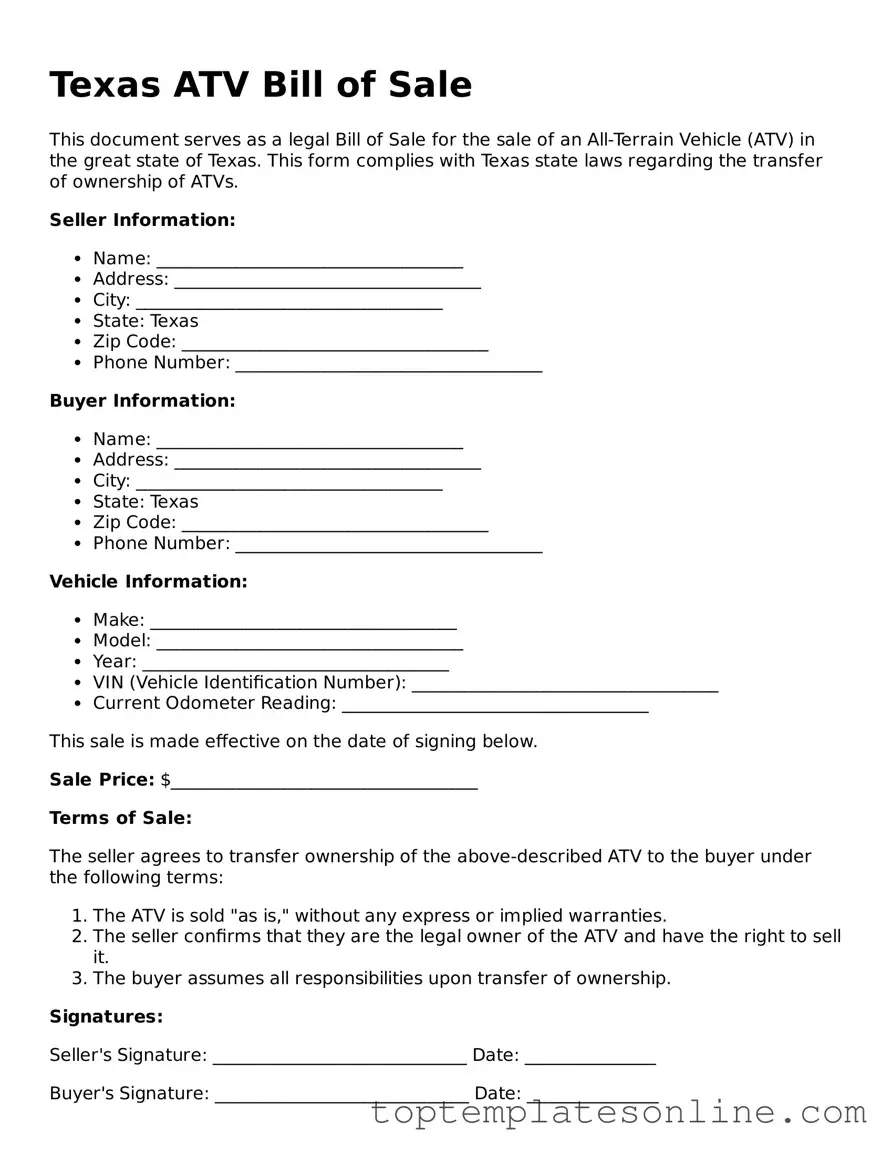Blank ATV Bill of Sale Template for Texas State
The Texas ATV Bill of Sale form is a legal document used to record the sale and transfer of ownership of an all-terrain vehicle (ATV) in Texas. This form serves as proof of the transaction and includes important details about the buyer, seller, and the vehicle itself. Understanding this form is essential for both buyers and sellers to ensure a smooth and lawful transfer process.
Customize ATV Bill of Sale Here
